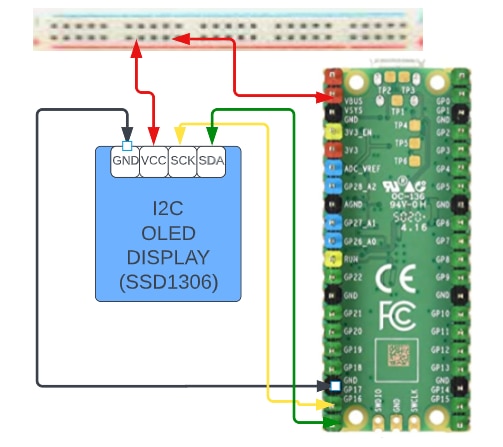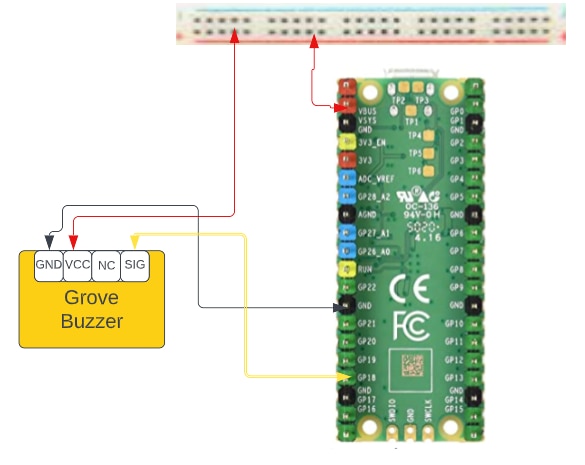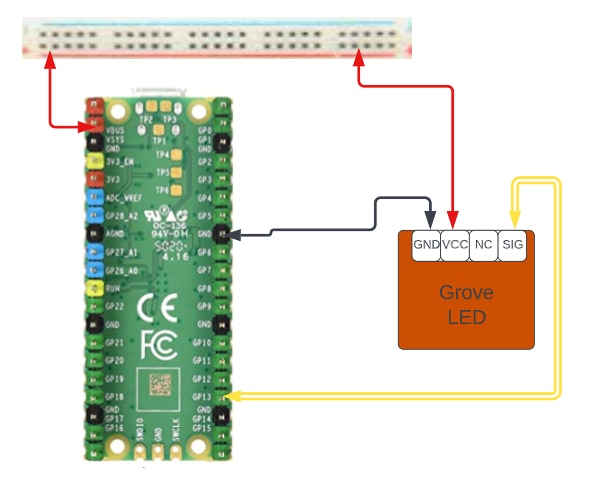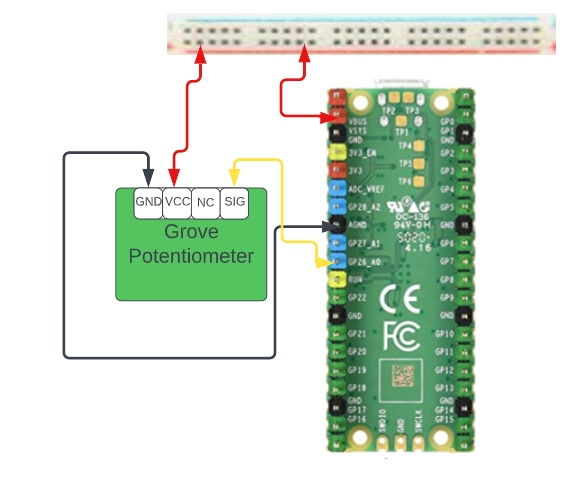 Blog#3 Testing- Music/Audio Project
Blog#3 Testing- Music/Audio Project
This blog is part of a blog series for the Pi-Fest Design Challenge.
This blog will describe the unit testing I performed on the 4 electronic components that I attached to the PICO. The Wiring diagram and the code for each of the 4 components that I will attach to the PICOis depicted in this blog. I then used the code to implement my design code.
UNIT Testing
-
PICO to Display
- This test will display 100 on the SSD1306 OLED screen along with a title.
-
Wiring
-
CODE
from machine import Pin, I2C import ssd1306 # setup the I2C communication i2c = I2C(0, sda=Pin(16), scl=Pin(17)) display = ssd1306.SSD1306_I2C(128, 64, i2c) bpm = 100 # The following part changes according to what you want to display display.text('Beats Per Minute,', 0, 0) display.text('----------------', 0, 16) display.text(str(bpm),50, 32) display.text('----------------', 0, 48) # The following line sends what to show to the display display.show()
-
PICO To Buzzer
- This test will turn the Grove buzzer on and off.
-
Wiring
-
CODE
# Active Buzzer that plays a note when powered from time import sleep from picozero import Buzzer buzzer = Buzzer(18) buzzer.on() sleep(1) buzzer.off() sleep(1) buzzer.beep() sleep(4) buzzer.off()
-
PICO to LED
- This test will blink the Grove LED every half second.
-
Wiring
-
CODE
from machine import Pin from time import sleep led = Pin(13, Pin.OUT) while True: led.toggle() sleep(0.5)
-
PICO to Potentiometer
- This test will print the Potentiometer value on the PC serial port.
-
Wiring
-
CODE
from picozero import Pot # Pot is short for Potentiometer from time import sleep dial = Pot(0) # Connected to pin A0 (GP26) while True: print(dial.value) sleep(0.1) # Slow down the output
References
This section includes some links that I found helpful.





Top Comments